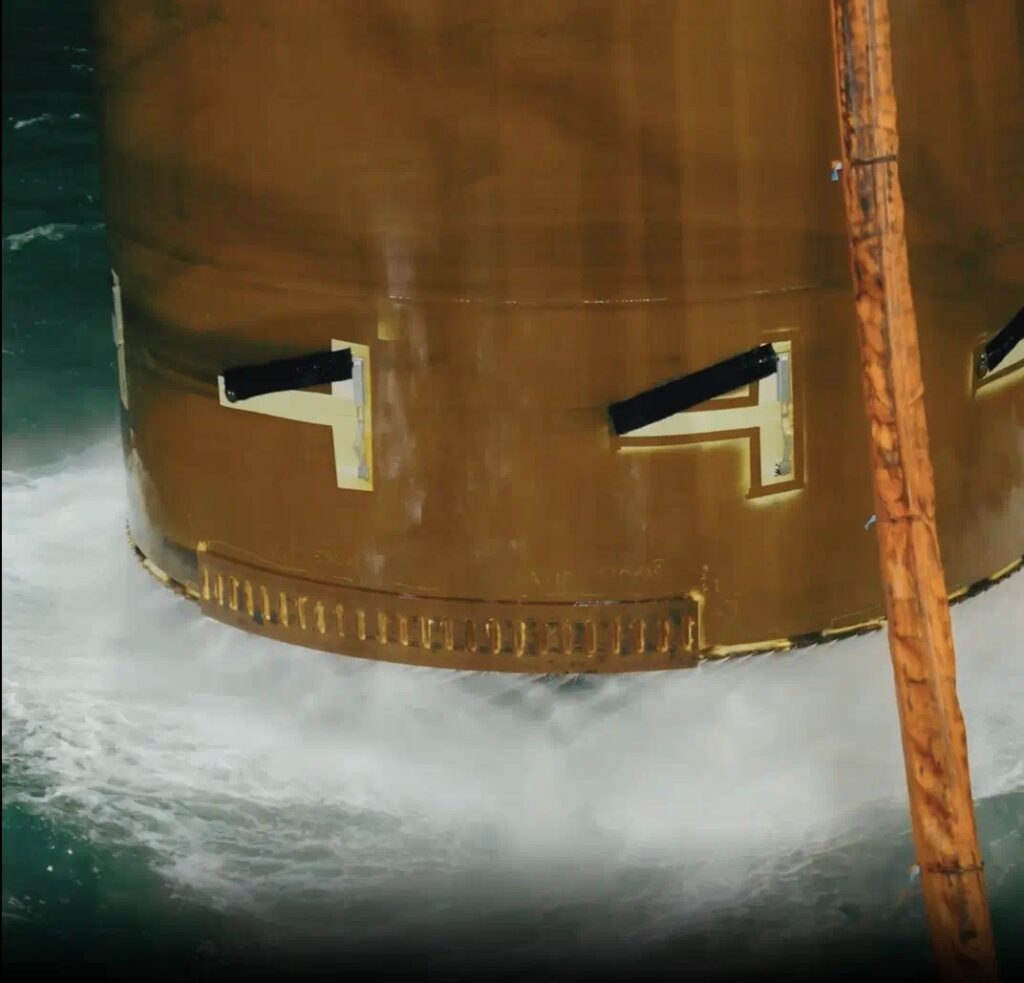Wind Energy – Monopile Installation
Building on existing marine life protections, Ørsted has developed a new, lower-noise installation method that could potentially revolutionise the way offshore wind foundations are installed.

The groundbreaking new technology has been successfully tested in Germany, proving that this innovative approach can dramatically reduce noise levels during foundation installations, strengthening existing protections for marine life and potentially paving the way for the next generation of monopile foundations.
This leading-edge technology represents one of the greatest advancements yet in offshore wind foundation installation methodology. It is also the latest example of how Ørsted, the global offshore wind leader, continues to harness innovation that supports biodiversity, protects the environment, and creates the green energy systems of tomorrow.
Ørsted is already implementing a range of effective protective measures during offshore wind farm construction, including limiting the duration, intensity, or extent of certain offshore construction activities.
Examples of these mitigating measures include the deployment of bubble curtains or other noise barriers during traditional installation. The new installation method allows Ørsted to further reduce the potential impact of construction activities on the marine environment and build more cost-effectively.
At the new German offshore wind farm Gode Wind 3, Ørsted has successfully tested an innovative installation method on three monopile foundations. The noise mitigation method involves a patented jetting technology attached to the monopile, which lowers the resistance of the surrounding sandy soil, effectively allowing the foundation to sink into the seabed – completely replacing conventional installation methods such as pile driving.
The implementation of the new installation technology has resulted in a substantial decrease in underwater noise levels: With a reduction of 34 decibels relative to the most commonly used installation method, and without additional mitigation, noise levels were reduced by over 99 % to a level just marginally above the ambient noise found in the German Bight in the North Sea.
Beyond the noise reduction, this new technology is a step change in offshore wind monopile installation that, once adopted at scale, can provide for more efficient and cost-effective installations of offshore wind foundations. 11 MW wind turbines have already been installed on top of the foundations, and Gode Wind 3 is expected to start commercial operation later this year.
This is the first time a jetting technology has been used to install full-size monopile foundations, making the tests a milestone for the entire industry. Ørsted carried out the installation together with Jan De Nul Group and their installation vessel Les Alizés as well as contractor Aarsleff.
Ørsted has been developing the technology over the past years and is now looking into how to introduce the technology into the future pipeline, which includes assessing the feasibility of the method on more complex ground conditions than the pure sand conditions found at the Gode Wind 3 site. Further regulatory approvals will also be needed before the technology can be implemented in other markets globally.
